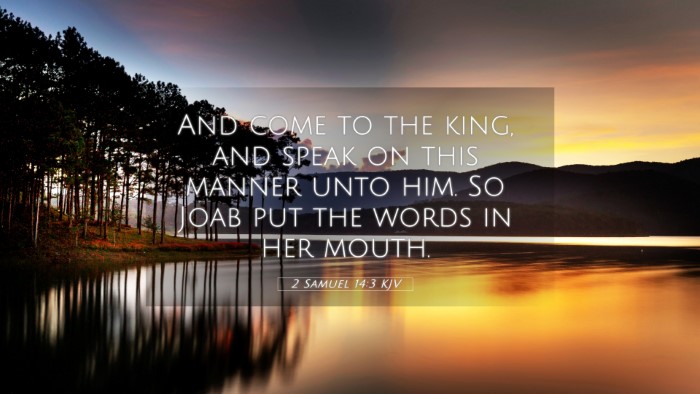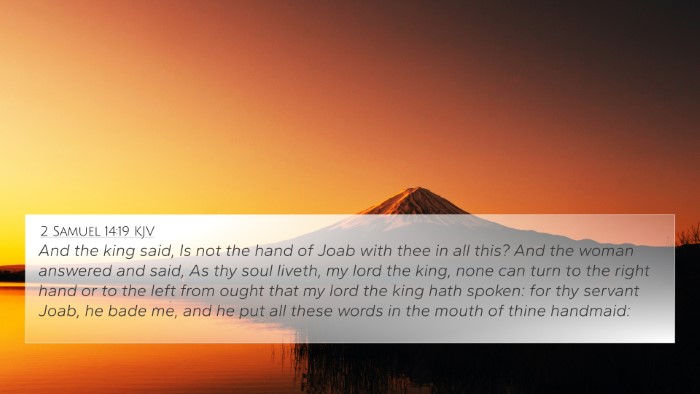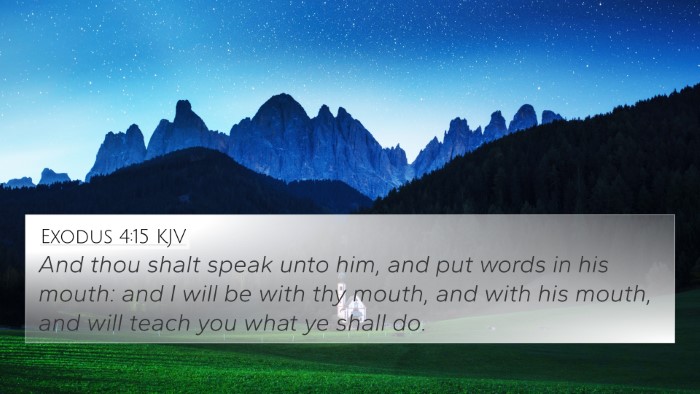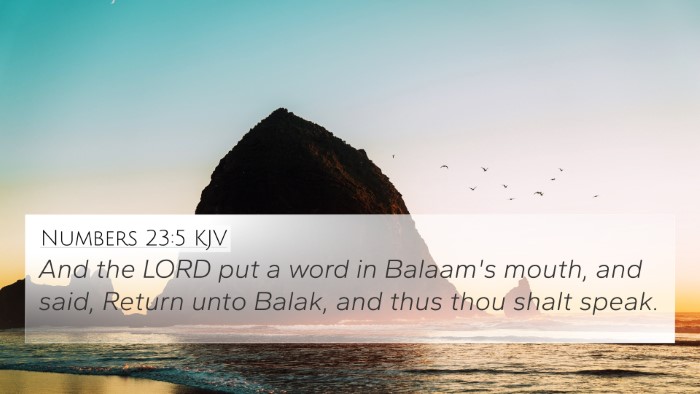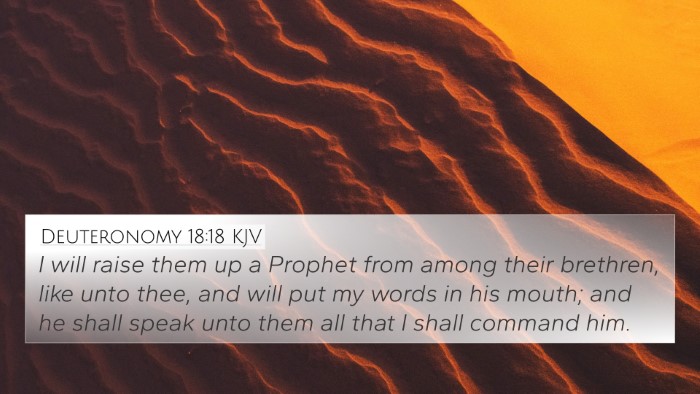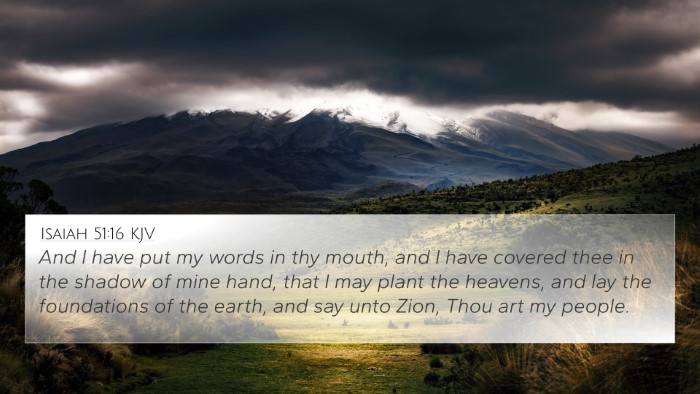Understanding 2 Samuel 14:3
Bible Verse: 2 Samuel 14:3
"And come to the king, and speak on this manner unto him. So Joab put the words in her mouth."
Summary and Meaning
2 Samuel 14:3 illustrates a critical moment in the life of King David, highlighting themes of intervention, communication, and the intricacies of royal decisions. Joab, David's military commander, orchestrates a plan using a wise woman from Tekoa. This woman is instructed to present a parable to the king, aiming to sway him regarding the fate of his son Absalom. The verse signifies the lengths to which people go to gain favor and influence decisions in the royal court.
Insights from Commentaries
Matthew Henry's Commentary
According to Matthew Henry, this passage showcases Joab's cleverness in trying to reconcile David with Absalom. Henry notes that Joab recognized David's turmoil over his son and sought to alleviate it through indirect means, emphasizing the importance of wise counsel in leadership decisions. Henry further suggests that Joab's actions reflect a broader human tendency to manipulate situations for desired outcomes.
Albert Barnes' Commentary
Albert Barnes emphasizes that Joab's strategy involved using a story to provoke emotional responses from David. He explains that by presenting a fictitious situation, the wise woman was able to draw parallels to David's own family issues, demonstrating the significance of empathy and understanding in the context of justice. Barnes highlights the complexities inherent in leadership where personal and familial conflicts can cloud judgment.
Adam Clarke's Commentary
Adam Clarke comments on the nature of Joab’s approach as both shrewd and compassionate. He states that the woman from Tekoa represents a voice of reason amidst chaos, designed to remind the king of the value of forgiveness and restoration. Clarke also points out that this act foreshadowed the eventual reconciliation between David and Absalom, indicating the importance of reconciliation within familial disputes.
Thematic Connections and Cross-References
This verse connects with several significant themes and scriptures throughout the Bible:
- 2 Samuel 12:13-14: Where David acknowledges his sin against God, highlighting themes of repentance and reconciliation.
- 2 Samuel 15:1-6: The account of Absalom's rebellion against David reflects the consequences of unresolved family conflict.
- Proverbs 15:1: "A soft answer turneth away wrath," relating to the wise woman’s gentle approach to the king.
- 1 Kings 1:6: Discussing the family dynamics within David's court, showcasing ongoing themes of division and unity.
- Luke 15:20-24: The parable of the prodigal son, serving as a powerful illustration of forgiveness and welcome, mirroring David's future interactions with Absalom.
- Romans 12:18: “If it be possible, as much as lieth in you, live peaceably with all men,” encourages believers to seek harmony, much like Joab’s intentions.
- Ephesians 4:32: “And be ye kind one to another, tenderhearted, forgiving one another,” which resonates with the need for reconciliation as demonstrated in the chapter.
Conclusion
2 Samuel 14:3 stands as a reminder of the complexity of human relationships, especially within leadership. The interplay between Joab, the wise woman, and King David illustrates how communication is crucial in navigating conflicts and pursuing reconciliation. The insights drawn from various commentaries emphasize the importance of wisdom, understanding, and the lengths to which individuals might go to restore relationships. As we seek to understand and apply these lessons in our lives, cross-references throughout the Biblical text can guide us toward greater insights and applications. Notably, the links between this verse and others deepen our appreciation for the interconnectedness of Scripture.
Exploring Further
For those interested in delving deeper into the themes and applications of this verse, consider utilizing:
- Bible concordances to find related verses.
- Bible cross-reference guides for systematic study.
- Tools for exploring thematic Bible verse connections.
- Comprehensive Bible cross-reference materials for various Biblical themes.
Applying Cross-Referencing Techniques
Engaging in a cross-referenced study can illuminate connections across both the Old and New Testaments:
- Explore how narratives in the Gospels relate to Old Testament wisdom literature.
- Examine the continuity of themes from the prophets to apostolic teachings.
- Identify similar stories and teachings through cross-referencing for sermon preparation and personal reflection.
In conclusion, 2 Samuel 14:3 opens a dialogue about the necessity of wisdom in leadership and the hope of reconciliation amidst discord. Through the combined insights of various commentaries and extensive cross-referencing, readers are equipped to grasp the richness of Biblical teachings and their relevance in contemporary contexts.

